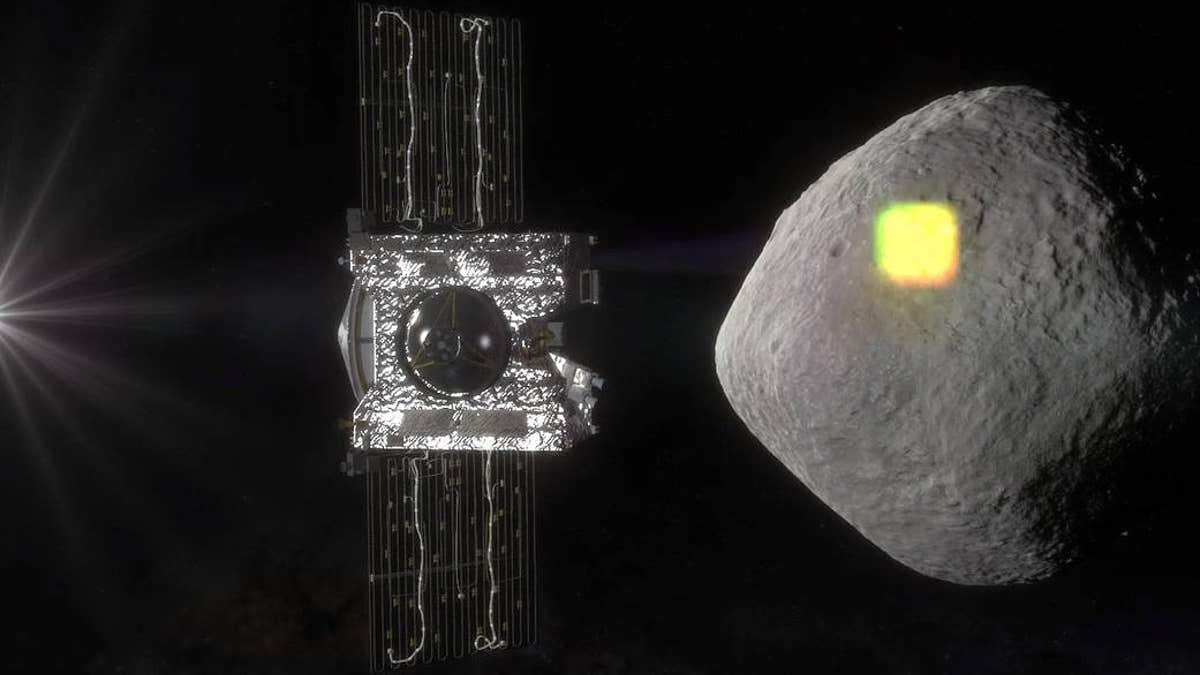
Artist's impression of OSIRIS-REx and asteroid Bennu. (NASA/Goddard/University of Arizona)
NASA’s OSIRIS-REx spacecraft is expected to rendezvous with asteroid Bennu on Monday after traveling more than 1 billion miles through space. The historic expedition will be the first U.S. mission to bring samples from an asteroid back to Earth.
OSIRIS-REx, which stands for Origins, Spectral Interpretation, Resource Identification, Security-Regolith Explorer, launched in September 2016 from Cape Canaveral Air Force Station. After reaching Bennu, the spacecraft will spend almost a year surveying the space rock from orbit. The probe is scheduled to briefly touch the asteroid with a robotic arm in July 2020 and retrieve a sample that will be returned to Earth in September 2023.
The asteroid, which is reportedly about 80 million miles from Earth, may provide answers to the origin of our solar system. “Asteroids are leftovers formed from the cloud of gas and dust - the solar nebula - that collapsed to form our sun and the planets about 4.5 billion years,” explained NASA in a statement. “As such, they contain the original material from the solar nebula, which can tell us about the conditions of our solar system's birth.”
NASA’S INSIGHT MARS LANDER ARRIVES ON THE RED PLANET, ENDS SUCCESSFUL JOURNEY
Other countries are also ramping up their efforts to study asteroids. The Japan Aerospace Exploration Agency's (JAXA) Hayabusa 2 spacecraft recently lowered two small rovers onto a distant asteroid. Hayabusa 2 arrived at Ryugu on June 27, 2018, when the asteroid was almost 170 million miles from Earth. The spacecraft, which traveled almost 2 billion miles to reach the space rock, is expected to leave Ryugu at the end of 2019 and return to Earth around the end of 2020.

This "super-resolution” view of asteroid Bennu was created using eight images obtained by NASA’s OSIRIS-REx spacecraft on Oct. 29, 2018, from a distance of about 205 miles. (NASA/Goddard/University of Arizona)
The probe is the successor to JAXA’s Hayabusa, which landed on asteroid Itokawa in November 2005. Despite being dogged with problems, the mission collected a number of asteroid samples, which returned to Earth with Hayabusa in June 2010.
This is a busy time for NASA. The agency’s InSight lander landed successfully on the surface of Mars earlier this week, ending a journey that lasted six months and more than 300 million miles.
NASA'S PARKER SOLAR PROBE GETS CLOSER TO 'TOUCHING THE SUN'
On Dec. 7, the first scientific data from NASA’s Parker Solar Probe will be downloaded to Earth via the Deep Space Network. The probe blasted off on its $1.5 billion mission to the star in the early hours of Aug. 12, 2018.
OSIRIS-Rex is expected to reach Bennu around noon EST on Monday.
The Associated Press contributed to this article. Fox News’ Jennifer Earl and Chris Ciaccia contributed to this article. Follow James Rogers on Twitter @jamesjrogers




















